
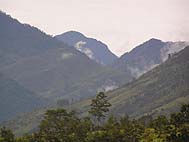
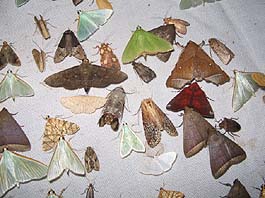
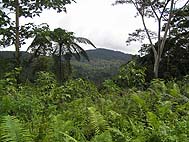
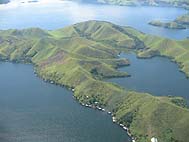





Papua-Insects.nl
The Papua Insects Foundation
Biogeography of Papua Indonesia
Geological history
The geography of the world is continuously changing in time. The Earth's crust is broken up in numerous pieces and is in constant movement. It is a dynamic system of "floating jigsaw puzzle pieces", some very large, others very tiny. Especially the area of Southeast Asia, the islands in particular, are subject to very complicated geological processes, tectonic movements. Dr. A.J. de Boer and Dr. J.P. Duffels discuss the biogeography of cicadas and the reconstruction of the geological history of Southeast Asia and Australian and Pacific islands in some of their publications. A short introduction is given below.
The rich biota of the Indo-Pacific region, east of Wallace's line, is a composite of Oriental and Australian elements. The high biodiversity presumably finds its origin in the extremely complex geotectonic past of the area. The area was shaped at the interaction zone of three converging tectonic plates: the Eurasian, Australian, and Pacific plates, and at present comprises a mixture of rifted microcontinents and fragments of Tertiary island arc origin. The area considered roughly consists of Sulawesi, Maluku, New Guinea, the Bismarck Archipelago, the Solomon islands, Vanuatu, Fiji, Tonga, Samoa, and some more outlying islands as the Caroline and Society groups. The present-day geography of this area developed after a series of continent-island arc collisions, first in southeast Asia, and later in northern Australia. The extreme complexity of the area in biogeographic respect is supposed to be mainly determined by the tectonic movements. The afore mentioned collisions at first caused the fragmentation of the originally more or less continuous island arc systems, but subsequent collisions led to a reassemblage of many such fragments in a changed geographical order in and around New Guinea. The fragmentation of island arcs led to vicariant speciation, while reassembly enabled dispersal of species into adjacent areas. Consequently, the flora and fauna of the area, and those of New Guinea in particular, result from a mixture of vicariant and dispersal events, and offer the opportunity to study the similarities and differences between the vicariance and dispersal patterns.
The complexity of geotectonic movements makes Wallacea, New Guinea, and the west Pacific a challenging area for areacladistic [and biogeographic] studies, since many of the changes that occurred in the relative positions of the various islands and island parts must have led to vicariant speciations. The taxon-areacladogram of a monophyletic group of sufficient age, that shows a high rate of endemism in the areas concerned, should reflect that geotectonic history.
More details about the geological history you will find in the literature refered to below and in the introduction of the Odonata.
Areas of endemism
Areas of endemism are characterised by overlapping distributions of endemic species or species groups, and by a concentration of species of any given monophyletic group. Areas of endemism can be separated from adjoining areas by their own particular biota. An area of endemism can consist of two or more areas of endemism of a 'lower rank', when monophyletic species groups endemic to this area contain monophyletic subgroups which are restricted to a part of the area of endemism in question.
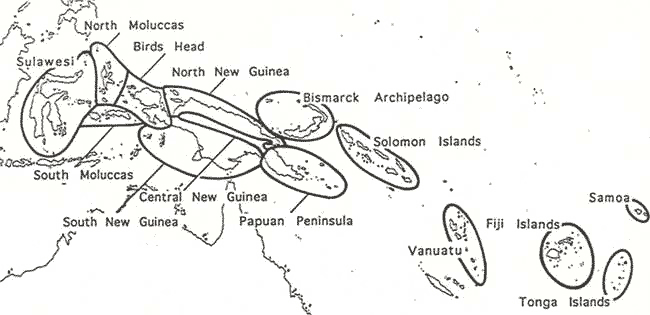
examples of areas of endemism for cicadas (from: A.J. de Boer & J.P. Duffels (1996b), fig. 3)
A.J. de Boer & J.P. Duffels, 1996a. Biogeography of Indo-Pacific cicadas east of Wallace's Line. In: A. Keast & S. Miller (ed.). The origin and evolution of Pacific Island biotas, New Guinea to Eastern Polynesia: patterns and processess. pp. 297-330. SPB Academic Publishing, Amsterdam.
A.J. de Boer & J.P. Duffels, 1996b. Historical biogeography of the cicadas of Wallacea, New Guinea and the West Pacific: a geotectonic explanation. - Palaeogeography, palaeoclimatology, palaeoecology 124: 153-177.